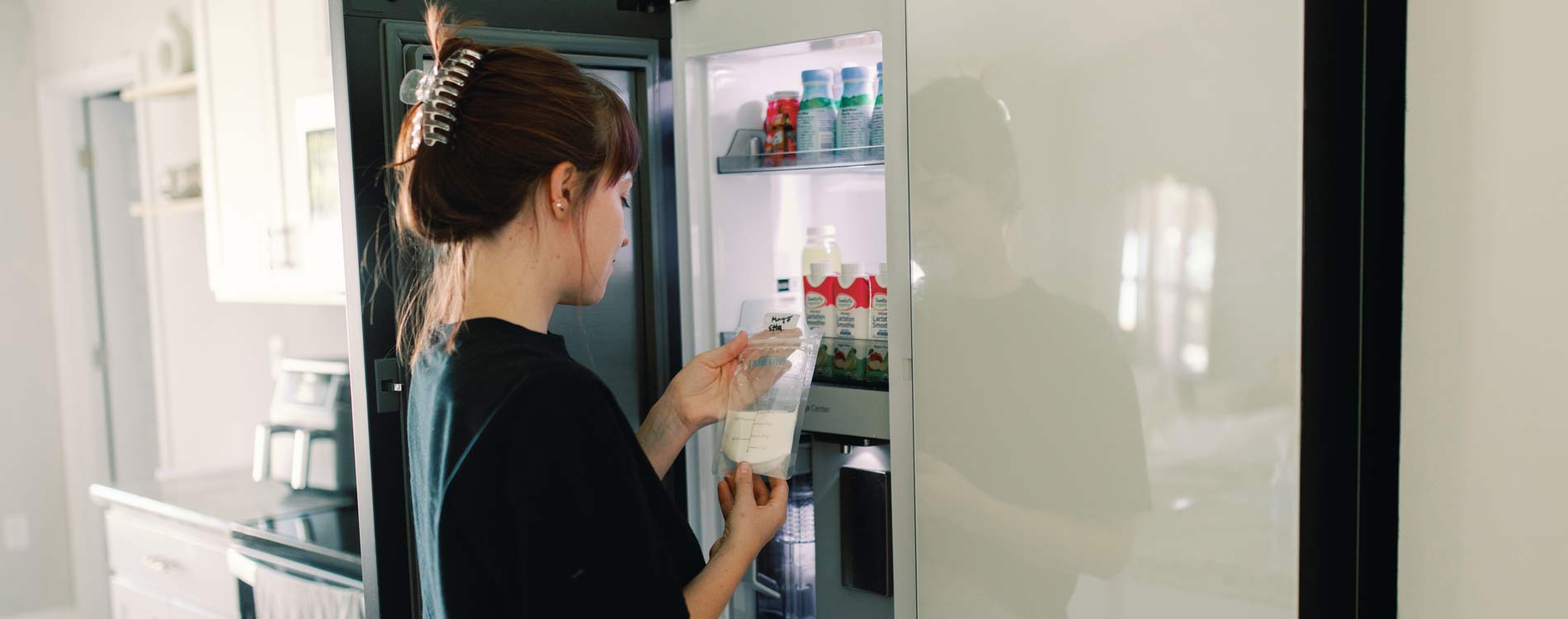

Safe Breast Milk Storage and Handling
Producing breast milk doesn't always come easily, so when you do have enough to save and store, you don't want to lose a drop! Here are some tips to make sure you store and handle your breast milk so you don't have to waste any precious liquid gold.
Follow CDC Storage Guidelines
The Center for Disease Control (CDC) has created a set of simple guidelines to make sure you handle and store breast milk safely, ensuring it doesn't get contaminated and baby doesn't get sick.
First, wash your hands and clean the surfaces you are working on. If you are pumping, make sure all the parts milk will touch are clean and sterilized (flanges, tubing, storage containers). Use designated breast milk storage bags or containers such as storage bottles or other food grade containers. Make sure the containers are clean and sterile and include a tight-fitting lid for freshness and to avoid any spills.
Freshly expressed or pumped milk can be stored:1
- At room temperature for up to 4 hours.
- In the refrigerator for up to 4 days.
- In the freezer for about 6 -12 months. It is ideal to use frozen breast milk within 6-months.
Safe Thawing
If you are thawing frozen breast milk, always use the oldest bag first. You can thaw frozen breast milk by placing it in the refrigerator overnight, running it under or placing in a bowl of warm water, or placing it in a bottle warmer. Do not microwave, this can create hotspots that may burn baby's mouth, and it destroys essential nutrients in the milk. Milk doesn't have to be served warm, it's fine to serve cold or room temperature – it really depends on what baby prefers.
If you have thawed milk in the refrigerator overnight, use it within 24 hours. If you have warmed milk or defrosted milk to room temp, use it within 2 hours.
Tips and Tricks for Optimal Storage
- Label, label, label.
Keeping track of all your stored milk can get confusing – if you plan to store milk more than a day or so, be sure to label the container with the date the breast milk was expressed. If there aren't clear measurement markings on the storage container, you should also write the number of ounces. If you bring your baby to daycare, make sure to label their milk with their name.
Pro tip: label your breast milk from days you or baby were sick. Breast milk naturally produces antibodies when you and/or baby are sick. If you store this milk, you can give it to baby when they are feeling under the weather for an extra boost!2 - Store in small quantities
Store milk in batches of 2-5 ounces. This way you are less likely to waste any excess milk that baby doesn't drink, since unfrozen milk is only good for a few hours. DO NOT re-freeze or refrigerate already thawed milk. - Don't place in the door
Be sure to place breast milk deeper into the refrigerator or freezer. This will keep it colder and help it to last longer. - Freeze storage bags flat
If you are using breast milk storage bags, remove as much air as possible (this helps lessen the potential for contamination and gives extra room). Place the bags flat in the freezer. Once they are frozen, you can stack them together and save even more space!
DISCLAIMER: THIS CONTENT DOES NOT PROVIDE MEDICAL ADVICE
The information contained is for informational purposes only and is NOT intended to be a substitute for professional medical advice, diagnosis, or treatment. You should not rely solely on this information. Always seek the advice of your healthcare provider.
Sources
- CDC. "Breast Milk Storage and Preparation." 27 November 2023. https://www.cdc.gov/breastfeeding/breast-milk-preparation-and-storage/handling-breastmilk.html
- Arquilla, Kate. Dr. Brown's Happy Baby Blog. "10 Breast Milk Storage Tips." https://drbrownsbaby.com/blogs/articles/10-breast-milk-storage-tips
